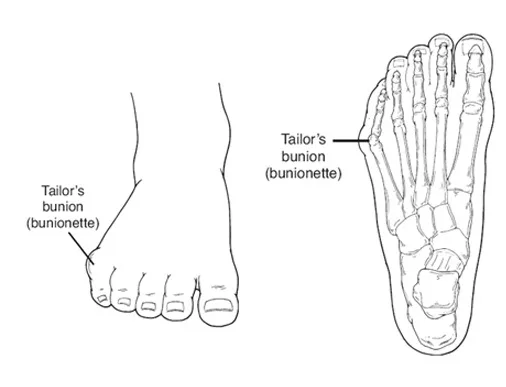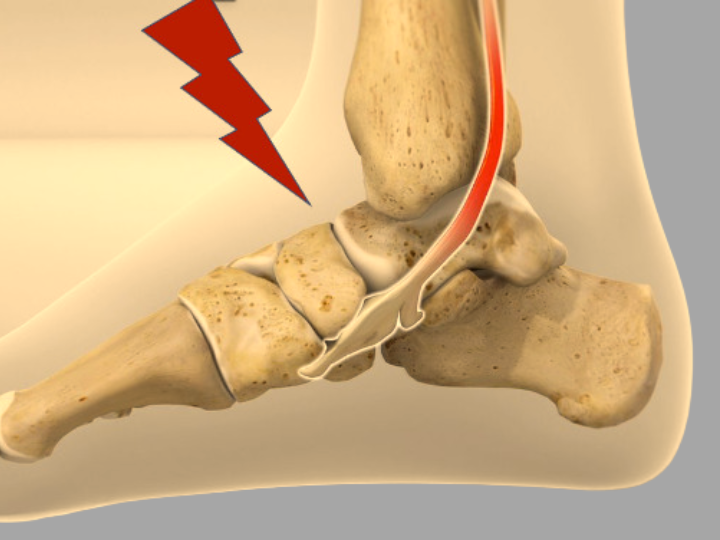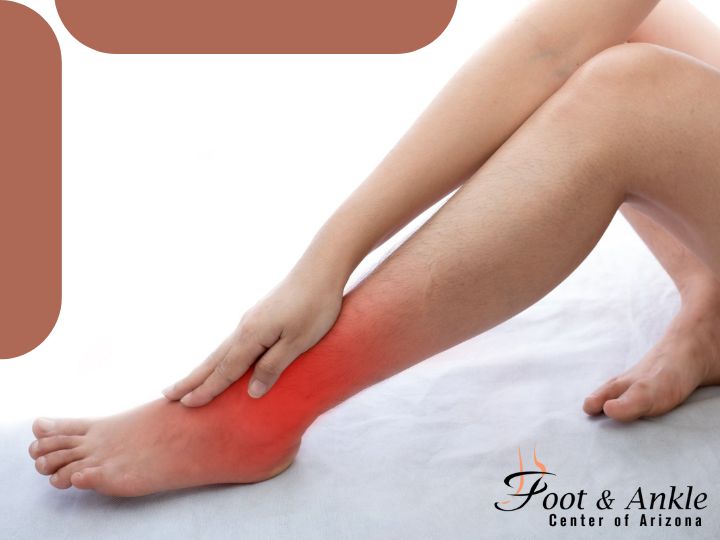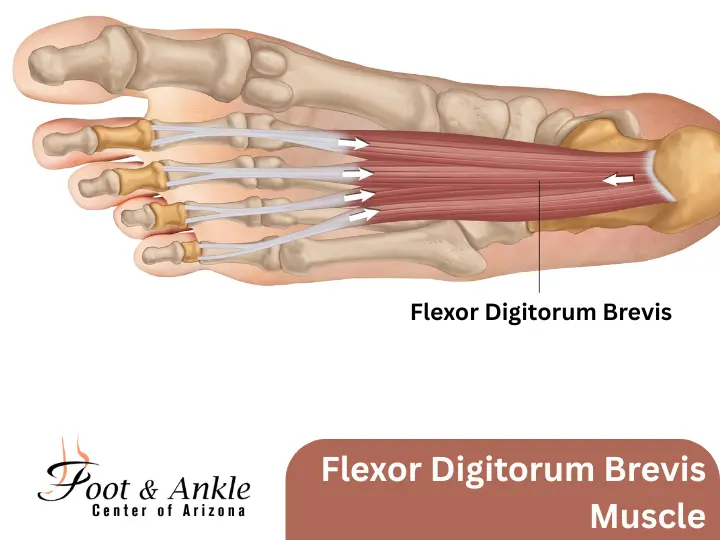What is a Tailor’s Bunion?
A Tailor’s bunion, often referred to as a bunionette, is a bulge of the fifth metatarsal bone located at the pinky toe’s base. The metatarsals are long bones in the foot, and the prominence arises at the head of these bones where they connect to the toes. Although less prevalent than bunions found on the foot’s inside, Tailor’s bunions share similar causes and symptoms.
The term “tailor’s bunion” originates from the past when tailors would sit cross-legged, causing the outside edge of their feet to rub against the ground repeatedly. This led to the formation of a painful protrusion near the little toe.
Causes of Tailor’s Bunion (Bunionette)
This condition can stem from inherited foot structures that present a predisposition for this type of bump to develop. Changes in the foot’s architecture can cause the fifth metatarsal to stick out while the smallest toe angles inwards, leading to the creation of the bunion.
In certain cases, the appearance of a Tailor’s bunion might be a bony spur on the side of the metatarsal head.
Shoes that squash the toes together typically worsen the discomfort accompanying a Tailor’s bunion, intensifying the rubbing and pressure.
Symptoms of Tailor’s Bunion (Bunionette)
The primary indicators of a Tailor’s bunion include swelling, soreness, and redness at the bump’s location, especially when irritated by tight-fitting footwear.
Diagnosis
The protrusion of a Tailor’s bunion is visibly noticeable, facilitating diagnosis. Doctors commonly use X-ray examinations to assess the severity and underlying cause of conditions.
Non-Surgical Interventions
Various non-operative remedies may be considered initially, such as:
- Shoe Adjustments: Opt for footwear with a spacious toe box, steer clear of narrow, pointed shoes, or high heels.
- Padding: Applying specialized pads can alleviate discomfort.
- Oral Medications: NSAIDs like ibuprofen could help with the inflammation and pain.
- Icing: The use of an ice pack, wrapped in cloth to protect the skin, may reduce symptoms.
- Injection Therapy: Corticosteroid injections can address the inflammation.
- Orthotic Devices: Custom-made orthotic implements might be recommended.
Surgical Options
When persistent pain does not respond to non-invasive treatments, surgery might be proposed. The choice of surgical method is tailored to the patient’s specific deformity extent, lifestyle, age, and other relevant factors. The specific procedures undertaken determine the recovery time.
Choosing a Foot and Ankle Surgeon
Foot and ankle surgeons are podiatric medicine doctors, sometimes known as podiatrists or DPMs. And they hold extensive training in foot and ankle care. They can handle various conditions related to these body parts for patients of all ages, including those involving a Tailor’s Bunion. These specialists possess comprehensive educational backgrounds. And the experience necessary to execute a range of surgical interventions specific to foot and ankle issues.




